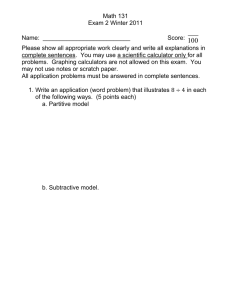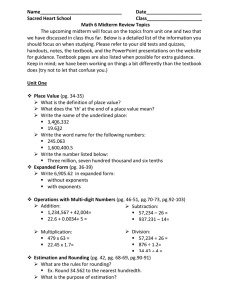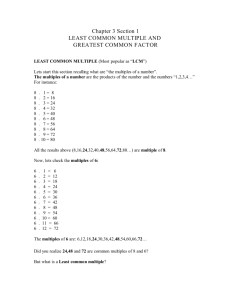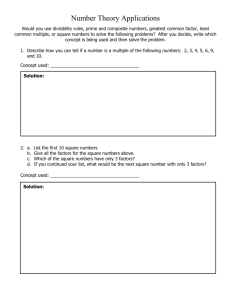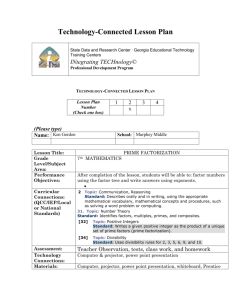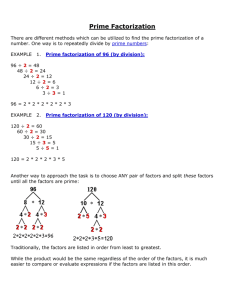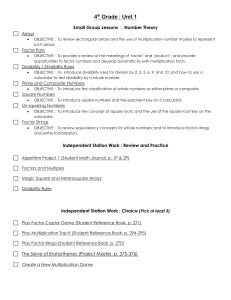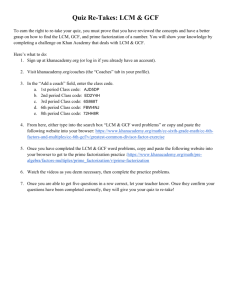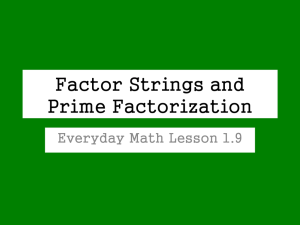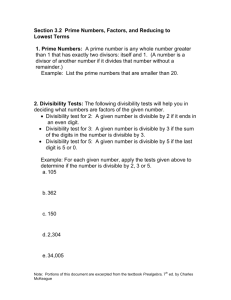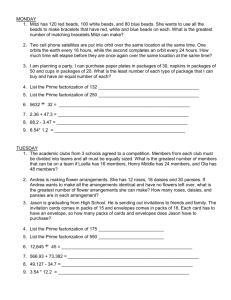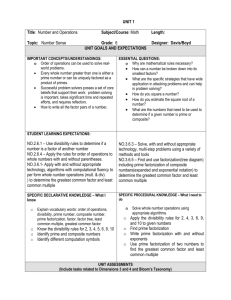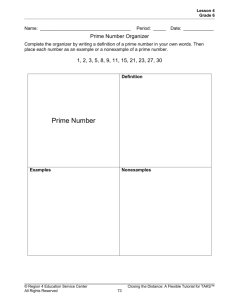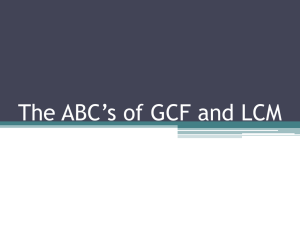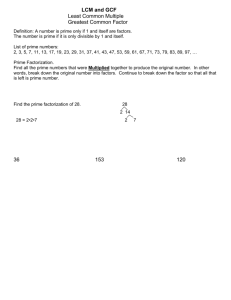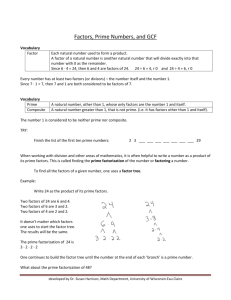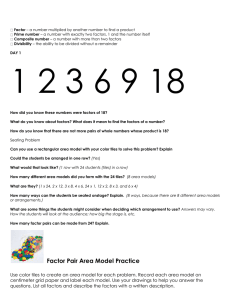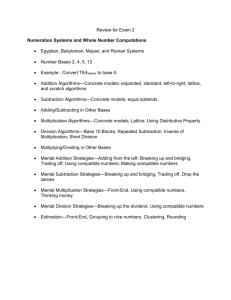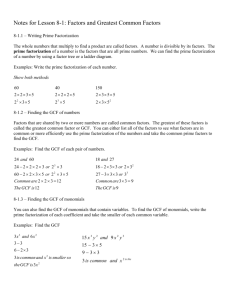MAT 150 Exam 2 - NAU jan.ucc.nau.edu web server
advertisement
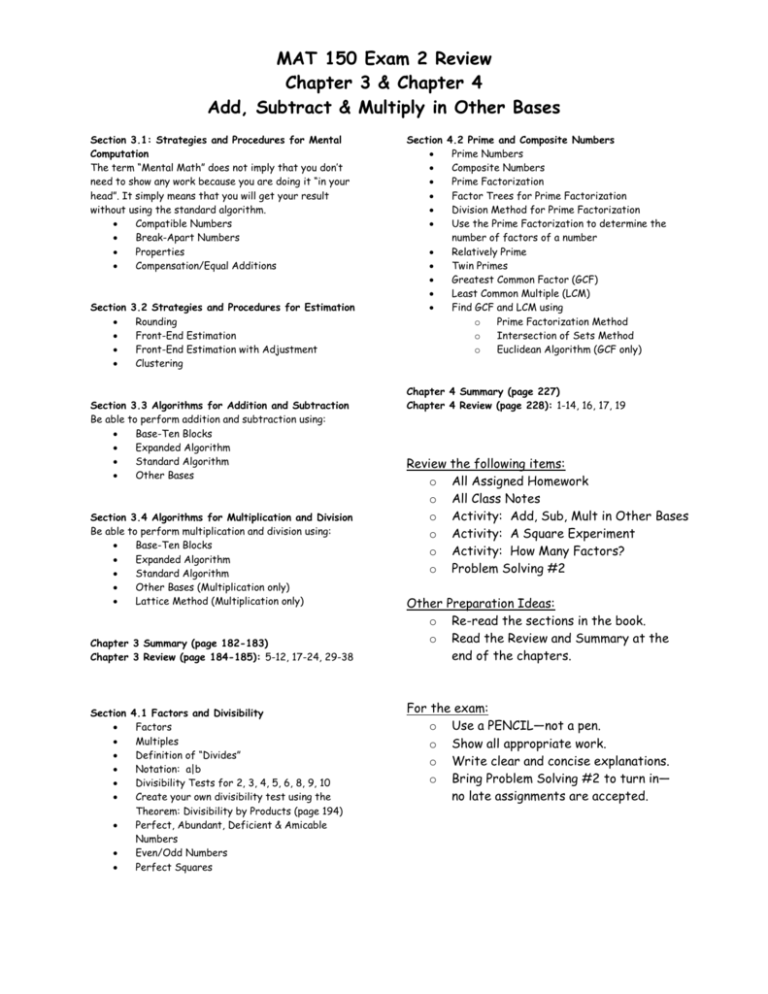
MAT 150 Exam 2 Review Chapter 3 & Chapter 4 Add, Subtract & Multiply in Other Bases Section 3.1: Strategies and Procedures for Mental Computation The term “Mental Math” does not imply that you don’t need to show any work because you are doing it “in your head”. It simply means that you will get your result without using the standard algorithm. Compatible Numbers Break-Apart Numbers Properties Compensation/Equal Additions Section 3.2 Strategies and Procedures for Estimation Rounding Front-End Estimation Front-End Estimation with Adjustment Clustering Section 3.3 Algorithms for Addition and Subtraction Be able to perform addition and subtraction using: Base-Ten Blocks Expanded Algorithm Standard Algorithm Other Bases Section 3.4 Algorithms for Multiplication and Division Be able to perform multiplication and division using: Base-Ten Blocks Expanded Algorithm Standard Algorithm Other Bases (Multiplication only) Lattice Method (Multiplication only) Section 4.2 Prime and Composite Numbers Prime Numbers Composite Numbers Prime Factorization Factor Trees for Prime Factorization Division Method for Prime Factorization Use the Prime Factorization to determine the number of factors of a number Relatively Prime Twin Primes Greatest Common Factor (GCF) Least Common Multiple (LCM) Find GCF and LCM using o Prime Factorization Method o Intersection of Sets Method o Euclidean Algorithm (GCF only) Chapter 4 Summary (page 227) Chapter 4 Review (page 228): 1-14, 16, 17, 19 Review the following items: o All Assigned Homework o All Class Notes o Activity: Add, Sub, Mult in Other Bases o Activity: A Square Experiment o Activity: How Many Factors? o Problem Solving #2 Chapter 3 Summary (page 182-183) Chapter 3 Review (page 184-185): 5-12, 17-24, 29-38 Other Preparation Ideas: o Re-read the sections in the book. o Read the Review and Summary at the end of the chapters. Section For the exam: o Use a PENCIL—not a pen. o Show all appropriate work. o Write clear and concise explanations. o Bring Problem Solving #2 to turn in— no late assignments are accepted. 4.1 Factors and Divisibility Factors Multiples Definition of “Divides” Notation: a|b Divisibility Tests for 2, 3, 4, 5, 6, 8, 9, 10 Create your own divisibility test using the Theorem: Divisibility by Products (page 194) Perfect, Abundant, Deficient & Amicable Numbers Even/Odd Numbers Perfect Squares

